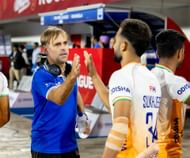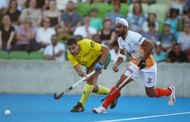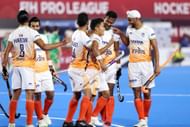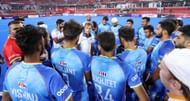The Indian men's hockey team suffered a deflating 0-5 loss to Australia in a Test series hosted by the latter team. Though the Kookaburras went into the series as big favorites, the Indian team still would have hoped for at least one win. However, as things turned out, the home team was too strong to overcome in all five Tests.
The series started on a very bad note for India as they lost 5-1 in the opening contest. More than the margin of defeat, it was the lackluster effort of the Indian team that was hard to digest.
The next four Tests saw India continually improving their performance. Still, the Kookaburras were relentless in their efforts.
With the series now in the history books, let's take a look at the biggest takeaways from these five matches. They are especially important with the Paris 2024 Olympics drawing near.
#1 Problems with India's forward line

It is stunning that India managed to score just two field goals in the entire series. This reflects a serious problem with India's attacking unit. Different combinations were tried in the series, but getting through the Australian defense proved near-impossible.
Mandeep Singh was better in this series, as he tried to get involved in the game more. However, he was still unable to leave a big mark in any of the matches.
Akashdeep Singh, Lalit Kumar Upadhyay, Sukhjeet Singh, and others, all struggled to make room for themselves in the circle. This could partly be attributed to Australia's resolute defense.
However, the inability of Indian forwards to dribble the ball forwards and win one-on-one contests with the Australian players is a bigger cause of worry.
Araijeet Singh Hundal and Mohammed Raheel are two youngsters who showed some promise, especially the latter. They were fearless in running with the ball and should get more chances.
Other forwards will have to find ways of getting more time on the ball. Against weaker oppositions, they are likely to do so more easily.
#2 India's defense stands tall

The biggest positive for the Indian team was the performance of their defense. Despite the relentless pressure put on them by the Kookaburras, Indian defenders managed to mostly keep their opponents at bay.
The trio of Jarmanpreet Singh, Harmanpreet Singh, and Amit Rohidas is the spine of India's defense unit. The three of them showed great composure and presence of mind most of the time in these five Tests.
Captain Harmanpreet deserves special mention as he looks calm even when the opposition is deep in his half. He uses his exceptional dribbling abilities and large frame to wean the ball out of danger.
Jarmanpreet also benefits from his tall stature and is among the very best when it comes to receiving overhead passes.
In the past, the Indian team has shown a tendency to collapse against Australia after they get an edge in the contest. But in the recent series and the matches in Pro League before, the Indian defenders ensured that Australia never ran away. This is a big improvement for India.
#3 Too many overhead passes?

One distinctive feature of India's playing style under coach Craig Fulton is their reliance on overhead passes. This seems to be almost the default option when the Indian players are looking to clear the ball from their half and also for pressing forward.
It's not a bad way to go but sometimes, it seems players are taking the easy way out with such tactics. They seem to be avoiding taking on one-on-one duels and fighting their way through the midfield.
Indian players have been traditionally known for their brilliant skills. With that, they should not be afraid to try and dodge opponents. Instead of lobbing the ball, running it along the ground should be tried as well.
#4 Hardik Singh remains vital to India's efforts

Vice-captain Hardik Singh is India's best player at the moment. That point was driven home in this series too. In the first match, when he was kept out to test the team's ability to do without him, the Indian side looked very ordinary.
The moment he came back into the side, the Indian team seemed far more dynamic and dangerous. Playing as a central midfielder, Hardik is brilliant at finding routes through the field for his forwards.
Without him, the team struggles to service its attackers. Hardik also seems unfazed when he is getting pressured by opponents. This quality is missing in other players.
If India has to do well at the Olympics, Hardik Singh has to be there.
#5 Need for more speed

One of the areas where the Indian team has improved vastly in the last decade is their fitness. This has allowed them to play at faster speeds and put more pressure on their opponents.
However, in this series, they seemed to lack this ability. The Australians were clearly superior with their speed and the Indian team seemed to play at a slower tempo.
This could partially be because of the more defense-oriented style brought in by Craig Fulton. But when attacking, especially on counter-attacks, the Indian side allowed the Australians to pull numbers back and stack up their defense.
It's not just about running fast. The Indian team also lacked one-time passes and smooth traps. So, even when they had the ball, they took too much time to move it forward for their attackers to gain an advantage. It would be interesting to see how Craig Fulton deals with this problem of his team.
